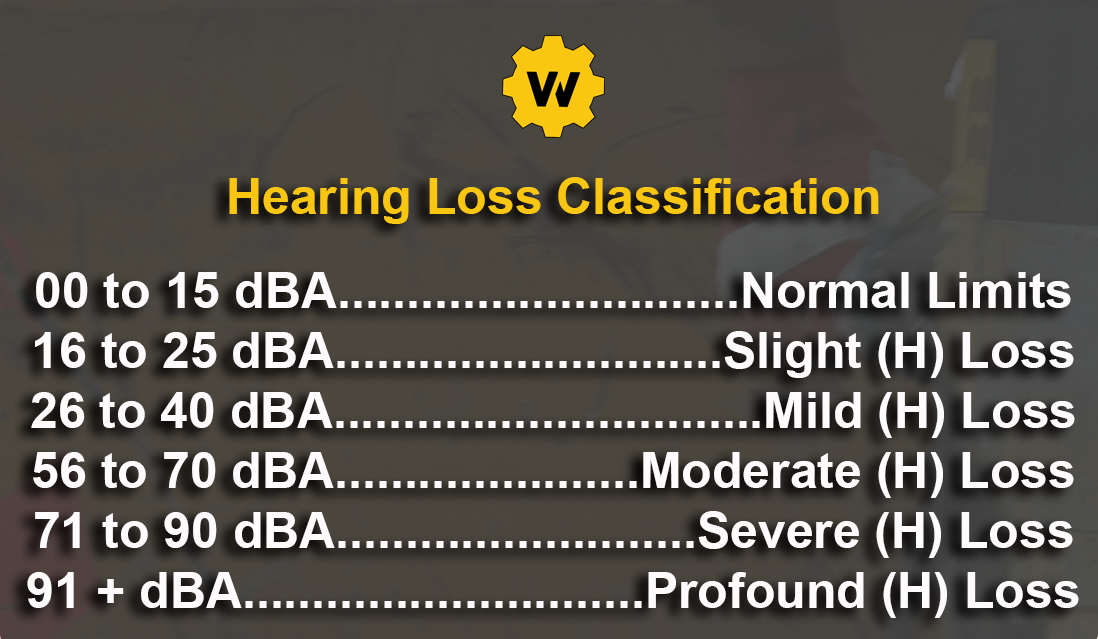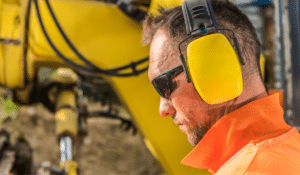October is recognized as National Protect Your Hearing Month, an important time of year to raise awareness about the importance of hearing conservation in the workplace.
Every year, millions of workers are exposed to the hidden danger of excessive noise in the workplace. Not only does this threaten hearing, but it also contributes to other adverse health challenges.
Noise exposure poses significant hazard to both the physical and mental health of workers, leading to conditions such as noise-induced hearing loss (NIHL), which results from damage to the inner ear’s sensory cells due to loud sounds. Prolonged exposure to noise at work can cause permanent hearing impairment, tinnitus, and heightened sensitivity to everyday noises. In addition, noise pollution is linked to increased stress levels, sleep disturbances, and even cardiovascular issues (like elevated blood pressure).
The long-term effects of noise can also negatively affect cognitive function, particularly in children, affecting their learning and everyday behavior. Altogether, the risks associated with noise exposure place an emphasis on the importance of protective measures in noisy environments.
So, as an employer, what should you know about protecting your team’s hearing? Let’s take a look at the importance of hearing protection, the risks associated with noise exposure, and effective strategies to safeguard this critical aspect of your workers’ health.
Related Article: Exploring 10 PPE Items for Your Hearing Conservation Program.
Related Article: 7 Steps for Preventing Occupational Hearing Loss.
What is Noise-Induced Hearing Loss (NIHL)?
Noise-induced hearing loss (NIHL) is an irreversible hearing condition caused by prolonged exposure to loud sounds/workplace noise. It can occur either gradually over time or suddenly, due to an intense noise event.
According to the Centers for Disease Control and Prevention (CDC), approximately 22 million workers are exposed to hazardous noise levels each year in the United States alone.
Unfortunate Statistics on Noise Exposure and Hearing Loss:
– About 25% of all workers in the U.S have been exposed to hazardous noise.
– 53% of noise-exposed workers reported that they didn’t make use of hearing protection equipment at work.
– Around 20% of noise-exposed tested workers have developed material hearing impairment.
– Approximately 12% of all workers in the U.S have hearing difficulty.

The Impact of Noise on Health
Excessive workplace noise not only affects hearing but also leads to other health issues, including:
– Increased Stress Levels: Persistent loud sounds can trigger stress responses, leading to anxiety and fatigue.
– Sleep Disturbances: Noise pollution can disrupt sleep patterns, affecting overall health and productivity.
– Reduced Communication: Difficulty hearing can hinder effective communication among coworkers, increasing the risk of accidents at work.
Identifying Hazardous Noise Levels
Occupational settings such as construction sites, factories, and music venues often expose workers to unnecessary high noise levels.
The Occupational Safety and Health Administration (OSHA) defines a hazardous noise level as anything above 85 decibels (dB).
To put this into perspective:
– Normal conversation: 60 dB
– Heavy traffic: 85 dB
– Chainsaw: 110 dB
– Rock concert: 120 dB
It’s important for employers and employees to recognize these levels and take appropriate measures to mitigate risks.
– See OSHA Standard for Hearing Protection (1926.101).
– See OSHA Standard for Occupational noise exposure (1926.52).
The Importance of Hearing Protection
Using appropriate hearing protection is vital for anyone exposed to high noise levels.
Effective workplace hearing conservation programs should include:
– Personal Protective Equipment (PPE): Earplugs and earmuffs are common forms of hearing protection that can significantly reduce noise exposure.
– Regular Audiometric Testing: Routine hearing tests help monitor any changes in hearing ability over time.
– Training and Education: Workers should be educated about the risks of noise exposure and the correct use of hearing protection devices.
Strategies for Protecting Your Hearing
Implementing effective strategies in the workplace can significantly reduce the risk of NIHL. Here are some key practices:
- Conduct Noise Assessments
Regularly assess noise levels in the workplace using sound level meters. This helps identify areas where noise levels exceed safe-limits.
- Implement Engineering Controls
Where possible, modify equipment or processes to reduce noise at source. This might include installing sound barriers or using noise-proof machinery.
- Establish a Hearing Conservation Program
Develop a comprehensive program that includes regular training sessions, audiometric testing, clear policies regarding the use of hearing protection and adopting safe practices to promote hearing conservation.
- Encourage Breaks from Noise Exposure
Implementing mandatory breaks in quieter areas can help reduce overall exposure time to high noise levels. Shifts and work rotations are also important.
- Promote Awareness Among Employees
Encourage a culture of safety where employees feel empowered to speak up about noise hazards and use protective equipment consistently.
- Use Appropriate Hearing Protection Personal Protective Equipment (PPE)
Using hearing protection PPE effectively reduces noise exposure by an average of 20 dB(A), which significantly lowers the risk of developing noise-induced hearing loss in environments with hazardous noise levels. Workers exposed to noise should always wear appropriate hearing protection, such as earplugs or earmuffs. Custom-fitted devices may offer the best protection.
- Schedule Regular Hearing Check-ups
Schedule routine hearing tests to monitor any changes in hearing ability, allowing for early intervention if necessary.
By implementing these strategies, workers can significantly reduce their risk of developing NIHL and maintain their hearing health over time.
Bringing It Together
As we observe National Protect Your Hearing Month this October, it’s vital to prioritize hearing health in the workplace. By understanding the risks associated with noise exposure and implementing effective protective measures, you can safeguard one of your team’s most valuable assets — their hearing.
Employers must take proactive steps to create a safer work environment, while employees should remain vigilant about their hearing health.
Together, we can make strides toward preventing noise-induced hearing loss and fostering a culture of safety in the workplace.
Audiometric Testing
For audiometric testing, which is required by OSHA, Worksite Medical brings the examinations directly to your worksite.
You can get up to six audio booths and up to 20 exams per hour for efficient testing. Audiometric testing is pure tone air-conducted hearing testing performed in each ear at frequencies of 500, 1K, 2K, 3K, 4K, 6K, and 8K.
This sort of testing identifies hearing levels and a sensitivity to the exposed sound.
We also provide hearing safety training. And, you never have to send your team members away to a clinic.
Get your risk-free quote or schedule your on-site audiometric exams below. Let’s keep your team safe and stay ahead of OSHA inspections together.
Take a virtual tour of our mobile medical units HERE.
***
About Worksite Medical
In most cases, OSHA requires medical surveillance testing, and at no cost to employees.
Worksite Medical makes that program easier with mobile medical testing.
We conduct on-site respirator fit tests, as well as audiometric exams, pulmonary function tests and heavy metal lab work, right on your job site. We also keep accurate, easy-to-access medical records for your convenience. You’ll keep your employees at work, and stay ahead of OSHA inspections.
With Worksite Medical, a mobile medical testing unit — we can bring all the resources of a lab to you. Our certified lab technicians can perform both qualitative and quantitative respirator tests to ensure a perfect fit.
Protect your team and your workplace now with Worksite Medical. Not sure what you need? Try our medical testing wizard here.
Give us a call at 1-844-622-8633, or complete the form below to schedule an on-site visit or to get your free quote!




